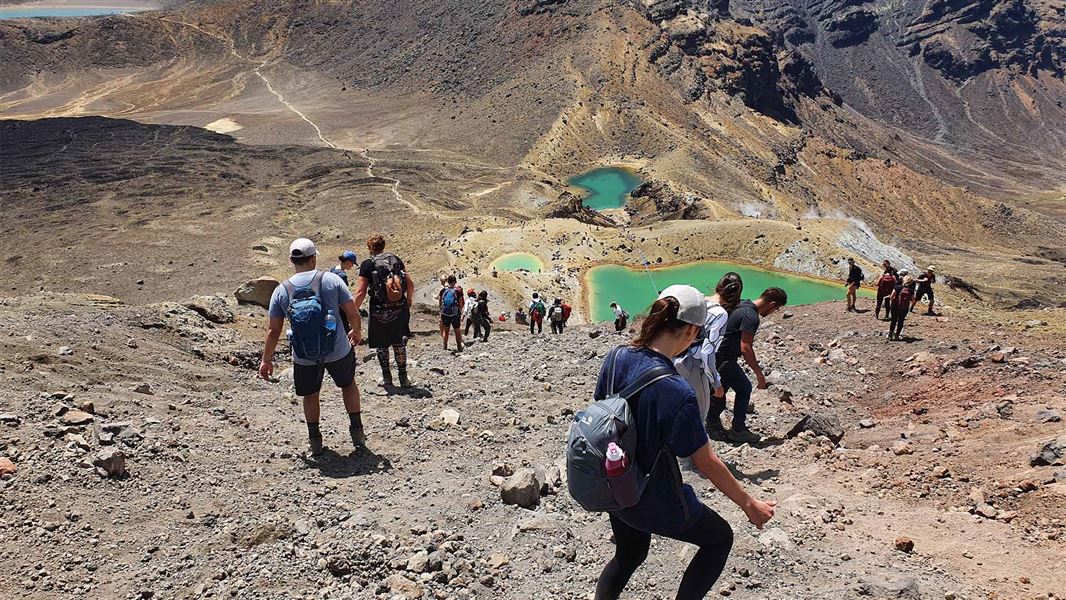
Introduction
Kiwis are being advised to prepare before they arrive, be aware of the risks and please respect and enjoy the Tongariro Alpine Crossing.Date: 23 October 2020
Despite a lack of international tourists, bookings for the Tongariro Northern Circuit Great Walk are up on this time last year, suggesting Kiwis are eager to experience Tongariro’s popular hikes.
Labour Weekend is the opening of the Great Walk season for the Tongariro Northern Circuit and marks the unofficial start of the season for the Tongariro Alpine Crossing day hike.
Tongariro Operations Manager Connie Norgate says the Tongariro Alpine Crossing is on the bucket list for many Kiwis and less experienced hikers often aren’t prepared or fit enough for this challenging 19.4 km hike.
“Many people don’t realise this hike is in an exposed alpine environment. The weather can change very fast with freezing temperatures, heavy rainfall and strong winds being common – even in summer. There’s no shelter on the track and when the weather comes in, there’s nowhere to go.
“The hike also passes through active volcanic and geothermal areas, where there is always a risk of eruption present, with the last occurring in 2012 from Te Maari Crater on Mt Tongariro.”
There are geothermal steam vents in the Emerald Lakes area and the ground can be unstable around these vents. Unfortunately, last season a hiker walked off track near the lakes and fell into one, suffering second degree leg burns. While this is a popular place for people to take photos and eat lunch it is very important for hikers to stay on track.
5 tips to prepare for the Tongariro Alpine Crossing
- Check the Metservice forecast for Tongariro National Park, which now includes a bad weather advisory to help visitors make safe decisions. Tongariro National Park weather forecast.
- Always wear sturdy footwear, have warm/waterproof clothing and carry plenty of food and water.
- Know your limits. If you are struggling or the weather turns bad, turn back to the start before Red Crater ridge and contact your shuttle service.
- Stay on marked tracks to avoid hazards and reduce impact on the sensitive alpine environment.
- Before you visit read information about the Tongariro Alpine Crossing.
More information
Contact
For media enquiries contact:
Email: media@doc.govt.nz